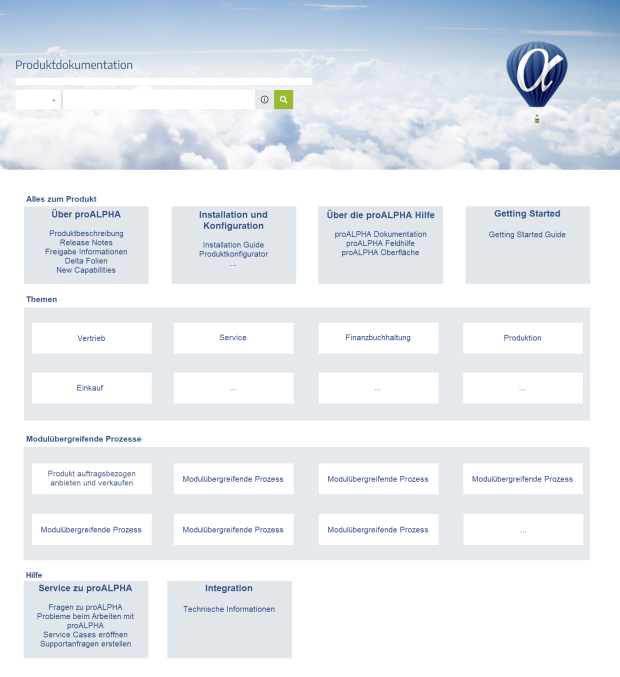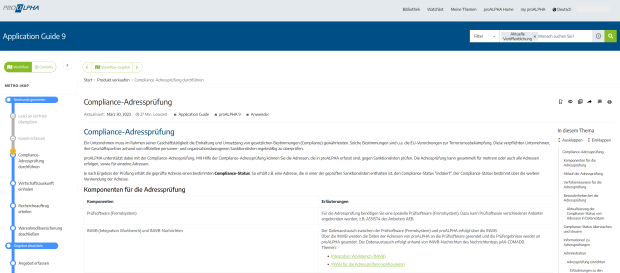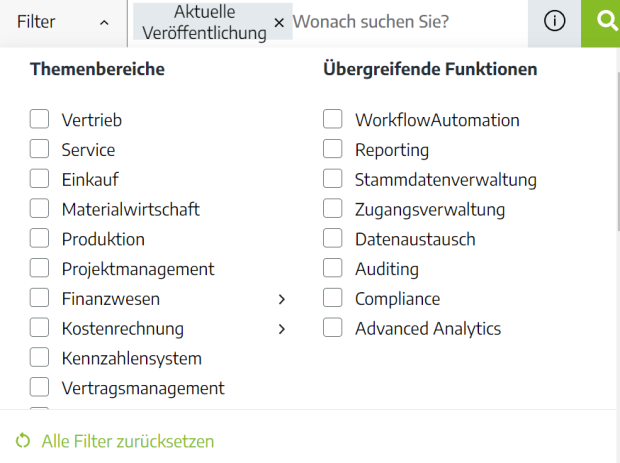
Developing a sustainable information architecture for a new content delivery platform
parson did a great job helping us to develop an information architecture for our new documentation portal. We really enjoyed working with the team from parson and are very happy with the results we achieved.
Objectives and achievements
proALPHA wanted to improve the delivery and usability of their technical documentation for both customers and staff. For the electronic delivery, proALPHA introduced the content delivery platform Zoomin. parson supported the project by developing a new information architecture and providing content engineering.
The objective was to develop a sustainable, smart information architecture that is tailored to the information needs of the different target audiences. This information architecture should be based on modular information units that are enriched with metadata and could be consumed by the content delivery system in such a way that users find relevant content in their preferred way. Also, the Zoomin portal should be structured in a way that supports users finding relevant content, irrespective of the content’s source.
After a thorough analysis, parson made suggestions for improving the information architecture of content and portal and set up a prototype to demonstrate the benefits of the changes.
Our services in detail
Analyze existing content and requirements for content delivery
- Analyze the target audiences for the content delivery and their information needs. For that, proALPHA employees from all over the company were interviewed, as well as selected proALPHA customers.
- Determine the requirements for the migration of existing proALPHA content to the new information architecture.
- Evaluate the existing documentation regarding style, structure, and writing.
- Evaluate the documentation of proALPHA competitors and make recommendations based on the results.
Develop information architecture and set up content prototype
- Develop content models that are required for the information needs of the target audiences and suitable for content delivery.
- Define a metadata model to support content integration, search, and filtering in Zoomin.
- Apply the new content model to selected content from the DITA-based documentation and Confluence.
- Make suggestions to improve the navigation and content linking in the content delivery portal.
- Provide recommendations for more efficient ways of using DITA and for the use of topic-based writing at proALPHA.
- Set up a content prototype with selected content for demonstration of selected changes.
Insights
About proALPHA
For around three decades, proALPHA has been the digital sparring partner for small and medium-sized businesses at 56 locations around the globe. For more than 8,200 customers – from the manufacturing industry, wholesale and other sectors – the powerful ERP core and add-on solutions from proALPHA and its partners form the digital backbone of their entire value chain, ensuring intelligent interconnection and efficient control of all business-critical systems and core processes. In increasingly competitive markets, the optimal integration of up and downstream processes is a crucial factor, and the software solutions of the proALPHA Group and its 262 partners support customers in precisely the areas that are of central relevance to their business. From data analysis and artificial intelligence to procurement, security, quality, energy, production or time management, the about 2,000 people who work for proALPHA have a very clear mission and commitment: to develop a digital solution platform that gives SMBs the competitive edge they need to master the constant process of transformation and change.



